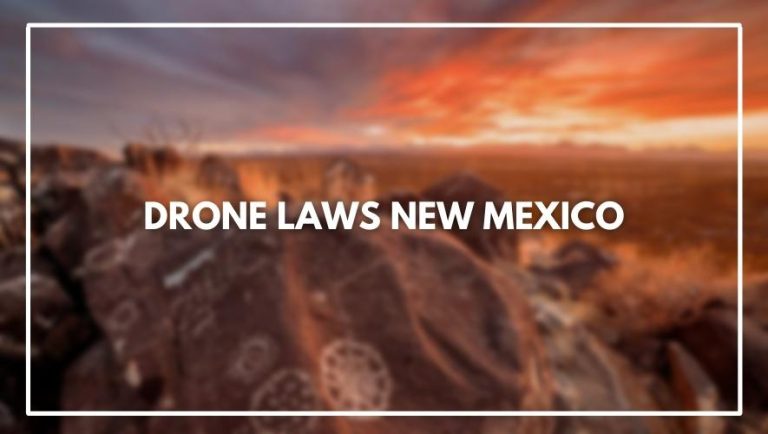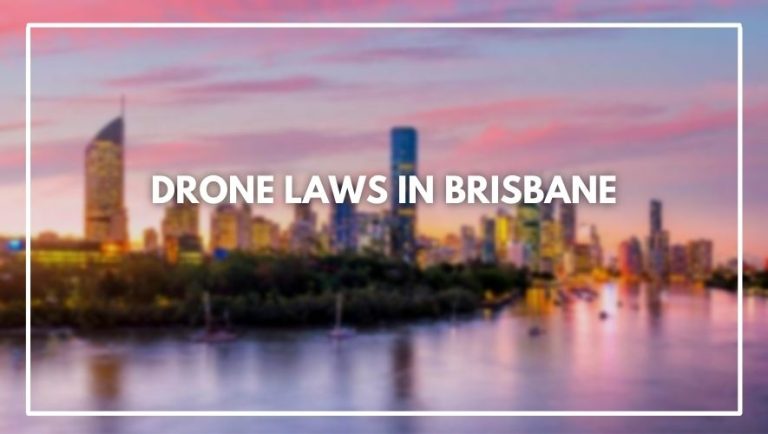When starting to fly a drone, it is important to know the rules of each country and city. But Brazilians do not have to worry as much because it’s one of the countries were flying drones is allowed with very few restrictions.
Drone Laws In Brazil

You Must Be At Least 16 Years Old
If you are aged 16 or older, you must:
- Be in good health
- Have good vision and hearing (wearing glasses or a hearing aid is fine)
- Be able to read, write and understand the Portuguese language.
Drone Must Be Less Than 30 Meters High
As a pilot, it is your responsibility to keep the drone in sight at all times. It must be kept less than 30 meters above ground level and should be flown only within 5 kilometers of an airport. It is illegal to fly within 150 meters of hospitals, prisons, and schools.
Drones Can Only Be Operated During Daylight Hours
- Drones flown in Brazil must be operated during daylight hours. Drone pilots must keep their drone in sight at all times.
- Drones operated in Brazil may only fly under good weather conditions, and should not be flown through fog, rain or snow. In addition, drones cannot be flown near clouds and drone pilots are not allowed to fly their drones within 30 meters of people, trees or buildings.
Drones Are Not Permitted Within 5 Kilometers Of Airports
Flying drones within 5 kilometers of an airport require the permission of the air traffic control facility or air club associated with that airport. This is a pretty standard measure all over the world, so you’ll need to check how far away airports are from your desired flight location.
If you’re flying close to major cities in Brazil, there will likely be several airports nearby. You can use AirNav RadarBox24 to find out where they are, although it’s always best to double-check this information on multiple sites and apps.
Remember that you must have permission before flying closer than 5 kilometers from an airport!
Always Keep The Aircraft In Sight
- You should always keep the aircraft in sight (visual line-of-sight).
- Never fly your drone over crowds or large gatherings.
- Never fly your drone out of sight. If you do, you won’t be able to see other craft and people, which could lead to collisions, especially when near busy roads or airports.
- Never fly near airports; this also applies to private airstrips and helicopter landing sites.
Maintain A Safe Distance From People And Property
- Not fly your drone over groups of people
- Maintain a distance of at least 5 meters between your drone and any person, vehicle, building or structure
- Only fly in good weather conditions
- Keep the drone in sight at all times (no further than 500 meters away)
- Stay below 120 meters above the ground
Follow The Rules Of Navigation Set By Anac
However, Brazilian regulations are different from FAA regulations. In the U.S., the FAA sets the rules, but in Brazil, ANAC (Agência Nacional de Aviação Civil) sets them. Although there are some differences, these two authorities have created very similar regulation systems regarding unmanned aircrafts.
The rules are updated periodically—just like they are in the United States—but they have proven to be more restrictive than what we see north of the equator.
Flying From An Airport Is Forbidden
- If you want to fly from an airport, you must first receive permission from the airport authorities.
- You must fly your drone at least 5km away from airports and airfields (with no exceptions).
- The maximum height is 30m.
Drones Over 250 Grams Must Be In A Specific Speed
Brazilian laws regulate the use of drones that weigh over 250 grams, or 0.55 lbs.
A drone’s weight is determined by weighing its empty shell, or “dry” weight. This means that you must remove anything from the drone before measuring it: for example batteries, radio communication devices, payloads and cameras. If a drone uses fuel to fly, this also must be removed before weighing; if batteries power it, then they must be removed as well.
In general terms, a drone’s speed is measured by the distance it travels in one hour: 69 km/h is equal to 19 meters per second (m/s). A meter is roughly equal to 39 inches.
Rules Apply To Any Drones Over 250 Grams In Weight
- Drones of all weights. The rules here apply to any drones over 250 grams in weight, whether they’re being used for commercial or leisure purposes.
- In the event you get caught breaking these laws, you will undoubtedly be subject to a fine. Be sure to double-check local rules before flying your drone anywhere in Brazil, and remember that if you break them, you’re liable to have your drone confiscated as well as face fines of up to $10,000 USD.
How To Register Drones In Brazil

Every Drone That Weighs More Than 250g Must Be Registered
It’s important to know whether or not you need to register your drone. Here are some reasons why:
- Drones that weigh more than 250 grams are required by law to be registered with the Brazilian Air Force. And believe us when we say, failing to register your drone could lead to some pretty hefty fines and even jail time!
- In fact, if you’re caught with an unregistered drone that weighs more than 250 grams, you might find yourself saying “adios” faster than a rocket-powered drone in a downward spiral. Don’t let this happen to you!
- The good news is that registering your drone isn’t all bad! In fact, it can protect both you and your pocketbook should anything go wrong during a flight.
- For example, if someone were to fly their drone over restricted airspace (for instance, flying directly over the Amazon Rainforest), then they would be liable for any sort of damage or harm caused by their unmanned aerial vehicle (UAV). Registering your aircraft can protect you from liability in these cases—so what are you waiting for? Get registered already!
Here’s Everything You Need To Do To Register Your Drone In Brazil
To register your drone in Brazil, you’ll need to create a DRC (Drone Registration Center) account. The DRC is a portal for the registration of drones and unmanned aircraft. To create an account, go to the site’s homepage and click on the link that says “Register” located in the upper right corner of your screen.
After clicking on this link, you’ll be asked whether you’re a natural or legal person; most individuals who want to register their drones will be registering as natural persons, so click on “Natural Person.”
The next step is filling out information about yourself and your drone(s). You’ll be asked to input some personal details such as your name, address, phone number, email address, and more.
You’ll also have to input information about the make and model of the drone(s) that you are registering (such as DJI Mavic Pro 2 or Emax Tinyhawk).
After submitting this information for approval by ANAC staff members reviewing this process can take up to 30 days depending on whether they have any questions or require additional information from you.
First, You’ll Need To Create A Drc Account
To begin the process, you’ll need to create an account with the DRC database. This will give you access to your drones’ licenses and registration data.
Fill out your first name, last name, email address, and phone number in the spaces provided. Then, choose a password and confirm it before ticking the box confirming that you have read and agree to ANAC’s Terms of Service (Termos de Uso).
Review The Information On Your Registration Request
- You can review your information before submitting it.
- You will also be able to edit your information before submitting it.
- You will be able to see what information you need to fill out before submitting your request.
- You should review your information for accuracy before submitting it.
Registering Drones In Brazil Can Be Done Quickly Online
Registering your drone in Brazil is a quick, easy process that can be completed online. It only takes a few minutes and you can do it anywhere with internet access. That even includes your mobile phone!
You can register multiple drones with one account and multiple owners or operators can use the same account as well. The best part is, registering your drone is completely free!
Are Drones Allowed In Brazil
All drones are allowed in Brazil. However, drones that weigh over 250 grams must first be registered with the Civil Aviation Authority and you must follow all rules of the Civil Aviation Authority.
To fly in Brazil you need a permit from ANAC (The National Civil Aviation Agency). This process usually takes at least 60 days to be completed, so get it started as soon as possible. Before getting your drone into Brazilian airspace, you should also obtain an international drone pilot’s license from ANAC.
What Are The Rules?
The rules for flying a drone in Brazil are actually pretty straightforward. If your drone weighs more than 250 grams (0.55 lbs), you need to register it with the Brazilian Civil Aviation Agency and get an “Autorização de Voo” (Flight Authorization).
If you’re flying a drone that’s less than 250 grams, no registration is required, but there are still some basic safety regulations that must be followed:
- Fly in daylight only
- Keep the drone within sight at all times
- Don’t fly near airports or other aircrafts
- Don’t fly over groups of people or private property without permission
- Don’t fly under the influence of drugs or alcohol
How Much Do Drones Cost?
In fact, if you’re not a serious drone enthusiast, the kind of person who watches drone-flying championships on TV and dutifully follows the FAA’s guidelines for recreational flying, it might be best to leave your drone at home.
This is because drones are not toys — they often cost hundreds or even thousands of dollars — and can be difficult to fly without experience.
However, if you’re a hobbyist or a professional filmmaker looking to make some beautiful aerial shots with your drone in Brazil, then this article is definitely for you.
We’ll go over everything you need to know about bringing a drone into or using one in Brazil: what rules apply both regionally and countrywide; which documents to bring; how much it costs; where locals fly their drones; and more. After reading this guide, you’ll hopefully feel confident that putting your plans together will be largely stress-free and enjoyable!
Where Can I Fly My Drone?
You will also need to check the airspace above any place you want to fly. You can find out what altitude is permitted by speaking to either the local air traffic control unit (ATC) or the bank that owns or manages the land you want to fly over.
In Brazil, drones can be flown commercially in parks and beaches. The restrictions on their use in these areas are fairly simple: they must be flown at least 30 feet away from buildings and people and must not cause a disturbance.
To comply with this law, you’ll need to make sure your drone has a minimum height of 30 feet from ground level and that it’s equipped with an electronic geo-fencing feature that prevents it from going into restricted areas or buildings.
You can fly your drone anywhere in Brazil except for airports, military bases, and other restricted no-fly zones such as those around hydroelectric dams. These are designated as “no-fly” zones because they’re considered too dangerous for aircraft and aircraft operators. Anywhere else is fair game!
Brazil Is A Difficult Country To Fly Drones
For your own safety, it is strongly recommended that you do not fly drones in Brazil. However, in general, there are no laws about drones in Brazil. This makes sense since the Brazilian government does not have a drone regulation office yet.
When it comes to flying drones in Brazil, there are many different rules and regulations that can be hard to keep track of. In addition to this, the rules do not seem to be very clear and they may change depending on the region where you are flying your drone.
Frequently Asked Question (drone Laws In Brazil)
What Are The Rules Concerning Drone Use In Brazil?
The rules concerning drone use are the same as for other countries, and they apply to both commercial and recreational drone use.
In general, you must always fly your drone with respect for people and property; avoid flying at night; fly below 120 meters (400 feet) above the ground; keep your drone away from airports or airfields; never fly near aircraft; don’t fly beyond your line of sight (ie more than 500 meters); don’t interfere with police operations; don’t use your drone to take photos or videos at public events without permission of those involved, etc.
When Is A Permission Required And When Isn’t It?
- When you are flying over private property, a permission from the owner or tenant is required.
- When you are flying in a restricted area, such as an airport or military base, a permission from the aviation authority is required.
- When you are flying over people (private individuals or groups), an authorization must be obtained from those affected by your operation.
- When you are taking off/landing and when your drone is within 50 meters of an airport runway, your operation should be coordinated with air traffic control at that airport (in Brazil this will happen automatically).
- You must always operate with lights on during night time operations unless otherwise authorized by Brazilian Civil Aviation Agency (ANAC).
How Do I Get A Permission From The Anac To Fly My Drone In Brazil?
Before you fly your drone in Brazil, you will need to receive authorization from the ANAC (Agência Nacional de Aviação Civil). The process is simple and straightforward.
Go to the website of the ANAC and fill out a form (the form is available in Portuguese only). You will also be asked to pay a fee of R$120 (around US$35), which covers up to 10 days of flight with your drone.
The ANAC will send you an email with a link that allows you to download your certificate of permission within 10 days after completing the online application process.
Can I Fly My Drone Over Cities In Brazil?
You must have permission from the ANAC to fly over cities. If you are a licensed pilot, you can fly your drone in Brazilian cities if you receive permission from the city.
The only exception is if your flight takes place in Brazil’s official airspace—which only goes up to 18 kilometers (about 60,000 feet) above sea level—and does not interfere with other aircraft or vehicles below.
Conclusion
Whether flying for pleasure or business purposes, always respect the laws that are in place. It’s easy to get carried away in the moment, but it’s necessary to stay compliant with drone regulations in any country you fly in. The information in this article should help keep you safe while flying your drone in Brazil.






